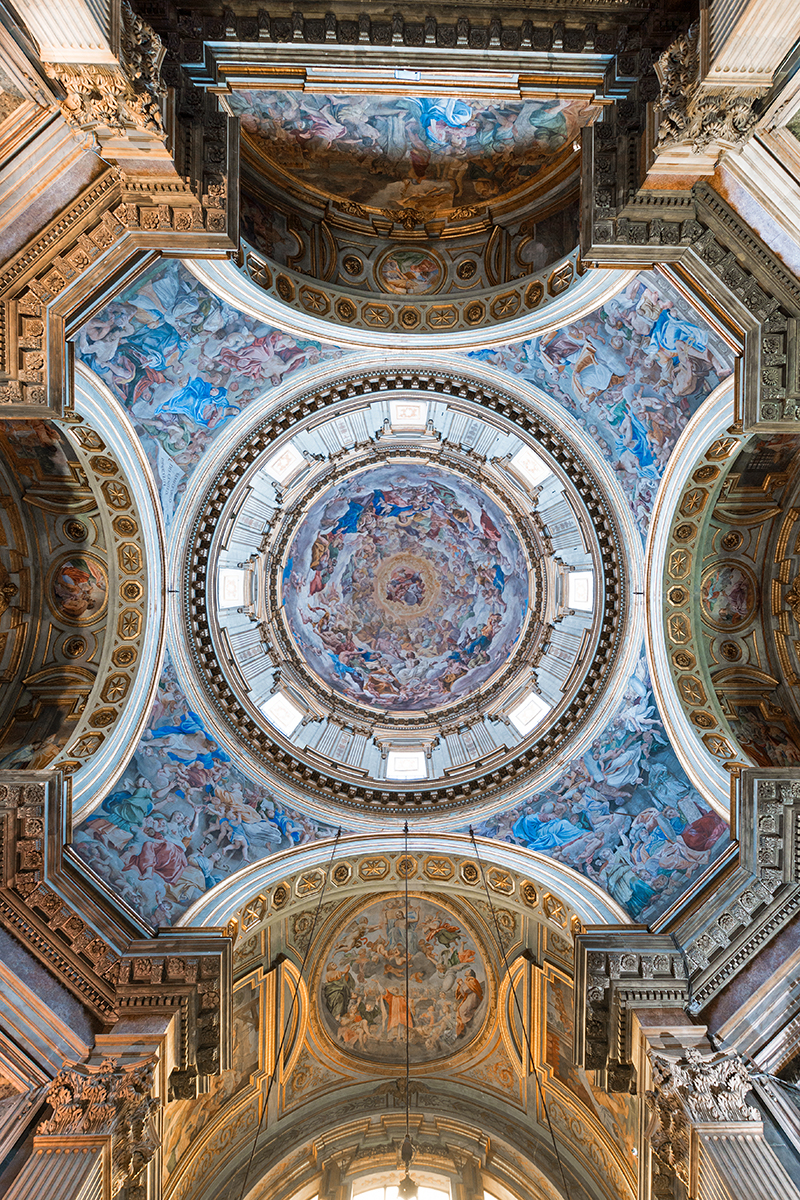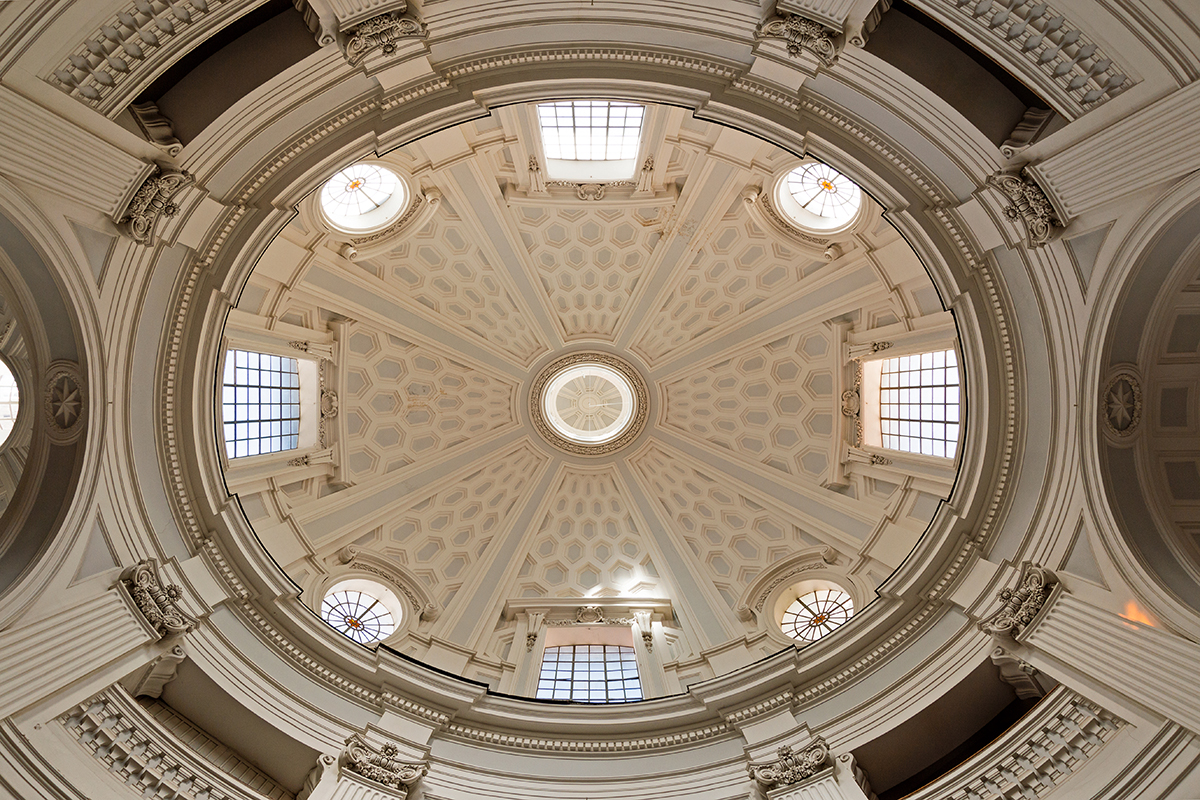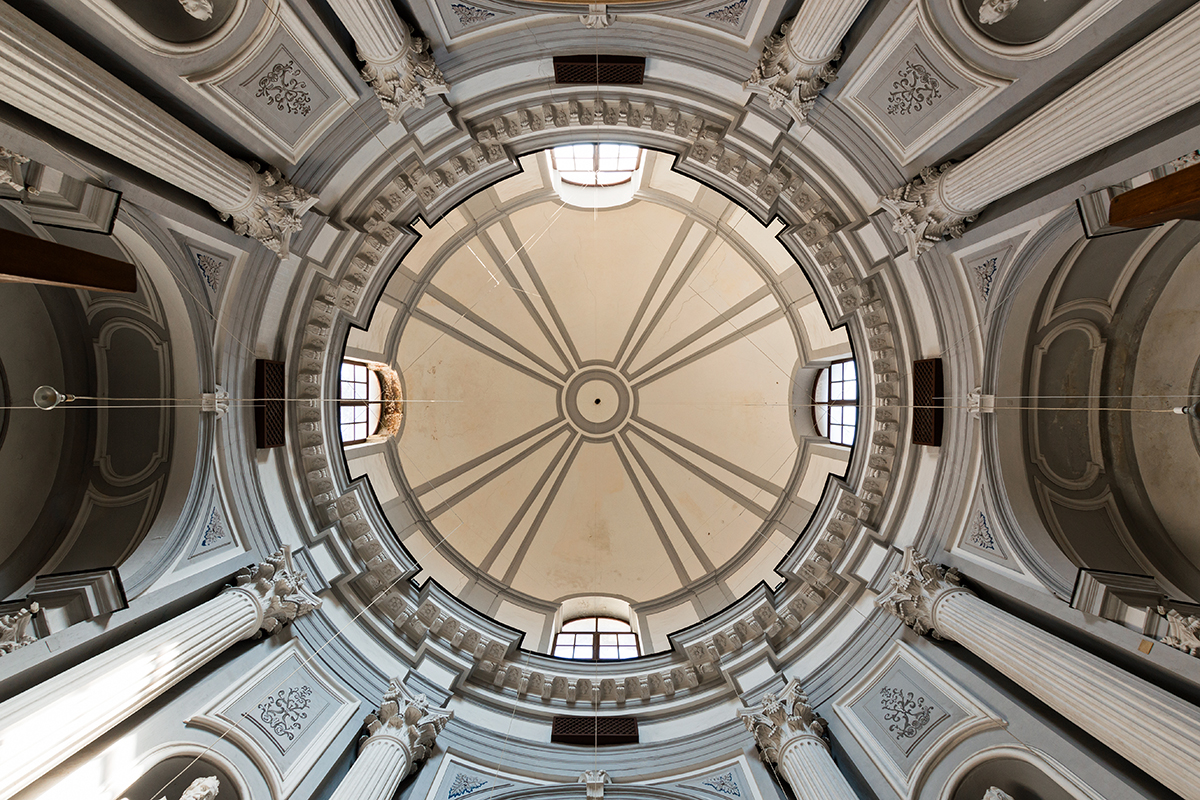RELIGIOUS CENTRALITY
Date: 2017
The central plan, already known by the ancients through the templar figure of Tholos and which reaches its peak with the Pantheon, is taken up by Renaissance architects who reproduce its forms as a pure geometric exercise. The Counter-Reformation elects the central plan as the cornerstone of a new vision of religion, it fixes man at the center of the universe in antithesis with the astronomical discoveries of Kepler and Galilei and the philosophical discoveries of Bruno. The center of the reservoir is seen as a non-dispersive gathering place for the bewildered faithful and in some cases it is also panoptic both from the different altars and from the entrance. The interpretation is that of total control of the masses that are literally flattened in the presence of the Ministry that officiates the faith from the privileged altar. The upward gaze of the shots favors the understanding of the forms adopted by the individual churches through the perception of the hypographic projection that returns the sculptural and pictorial details of the individual domes. The latter adopted as a compositional means capable of further emphasizing the meaning of centrality, as well as the symbolism of pushing oneself towards the sky.








